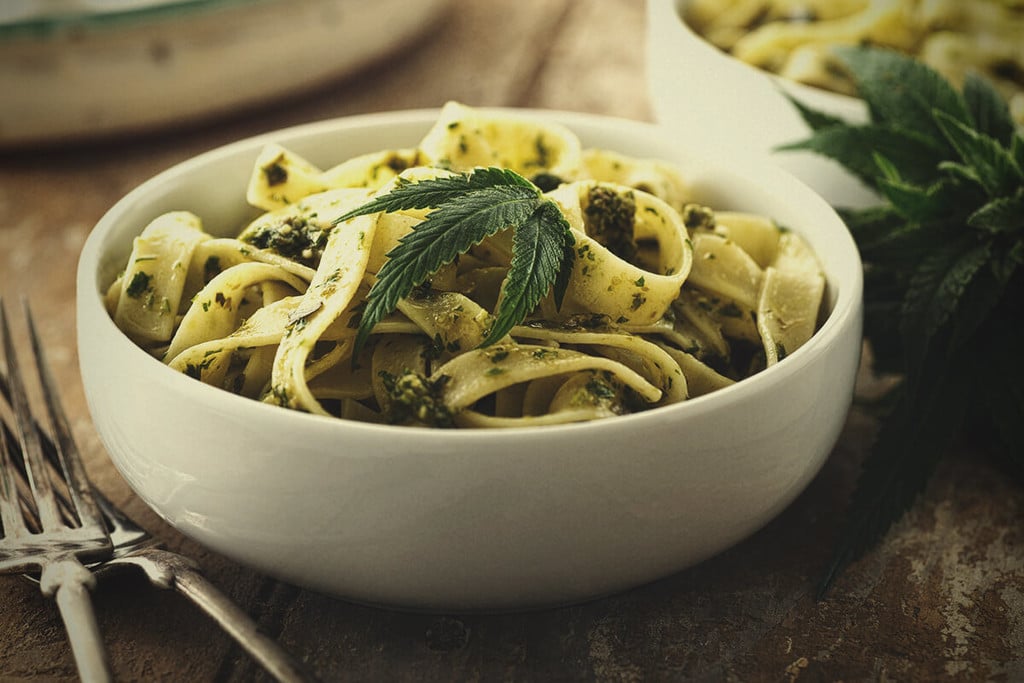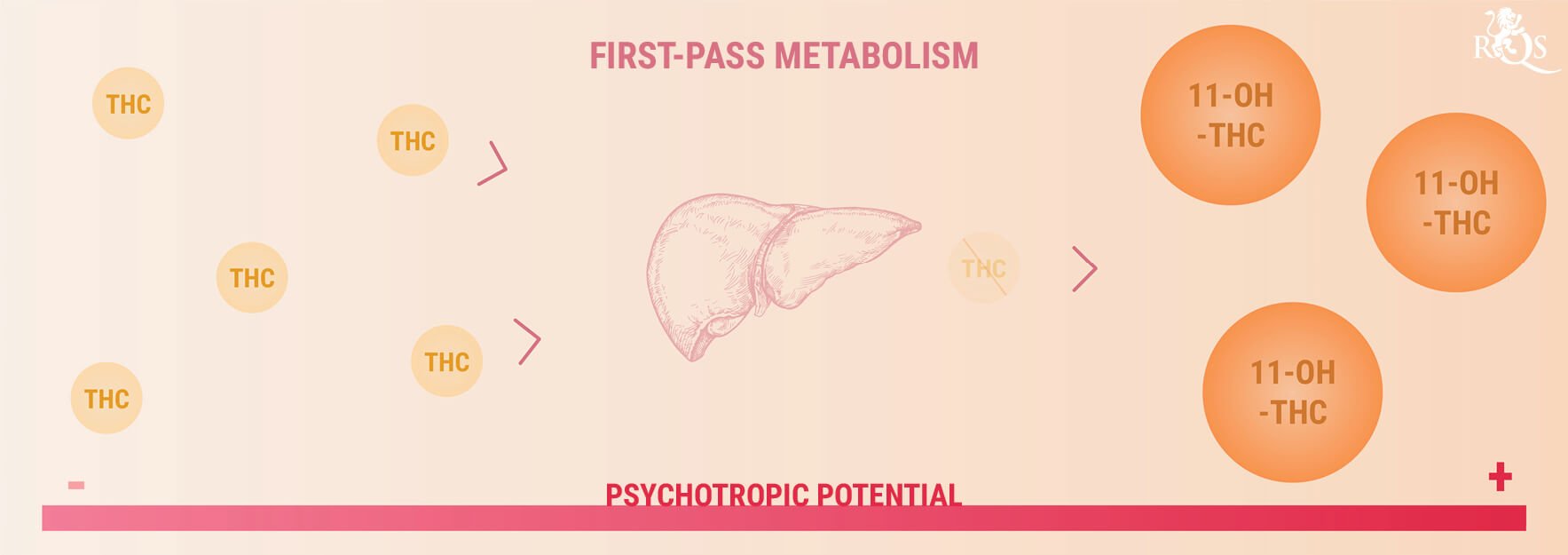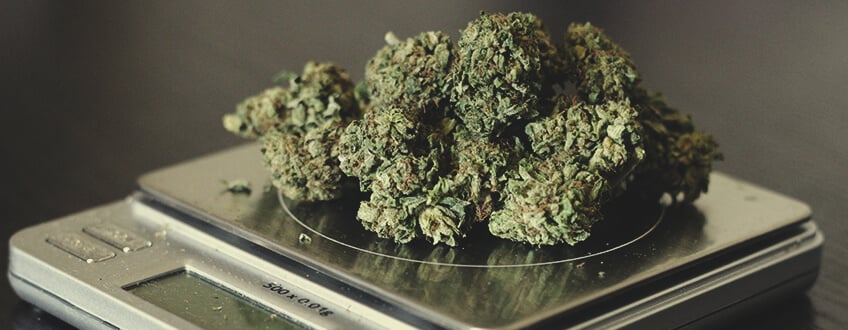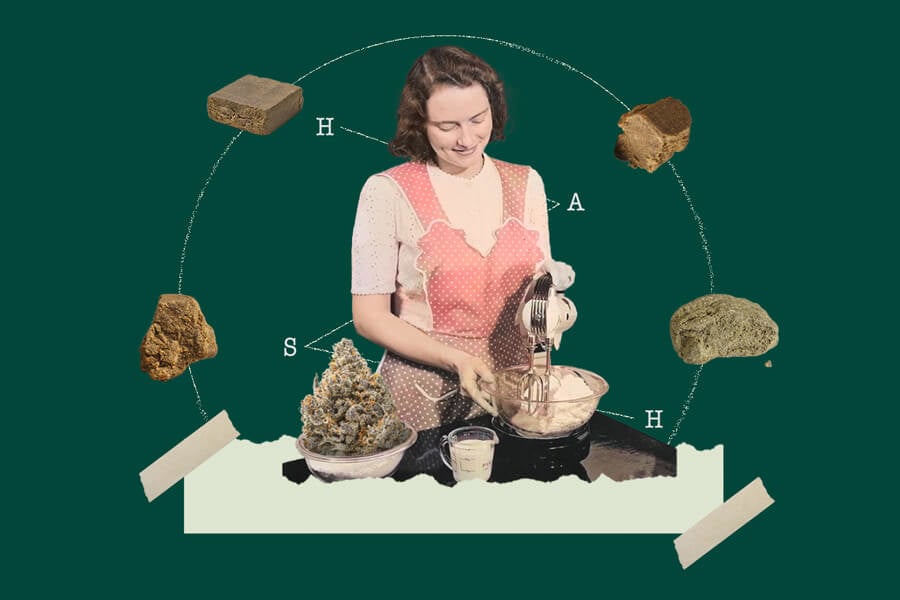.

Why Don’t Marijuana Edibles Get Me High?
Edibles are known to hit harder than smokable cannabis, but not everyone experiences that same kick. We take a deeper look at how edibles are processed by the body, and why they might not be getting you high.
Contents:
Marijuana edibles are notorious for hitting harder than smokables. Even a veteran smoker like Snoop Dogg stays away because, according to him, “they ain’t got no off button”.
But, as humans, we’re all built and wired differently. Some people are sent to another plane after just one bite off a weed brownie. But others don’t even feel the slightest hint of a head high.
If you’re one of those who doesn’t feel anything after having some marijuana edibles, this article is specifically for you. We’ll delve deeper into how the body processes edible cannabis, and why edibles aren’t getting you high.
But hey, fret not. Because, when it comes to cannabis, there’s always a workaround.
How Marijuana Edibles Are Digested and Processed
When you inhale weed, THC swiftly diffuses through the alveoli in the lungs into the bloodstream, then goes straight to the brain. Edibles operate differently.
Once THC is ingested, it gets absorbed by the intestines, then passes through the liver. The liver will then perform what’s called a “first-pass metabolism”—the initial metabolic process wherein foreign substances like cannabinoids are filtered out from the bloodstream. This prevents THC from getting circulated throughout the body via the blood.


This is the reason oral consumption of THC is one of the least bioavailable intake methods. So, why is it that edibles usually hit so much harder than regular cannabis? Going back to first-pass metabolism, this process actually changes the chemical composition of THC into 11-hydroxy-THC, a compound with greater psychotropic potential and a longer-lasting effect.
How Long Does It Take the Body to Process Edibles?
Like anything in life, the amount of time it takes to get to your destination will depend on the route you take.
In the case of cannabis, smoking allows the THC to travel through your system within minutes, which means you’ll start feeling the effects within minutes also.
When you ingest your weed, however, the effects won’t kick in for 30 minutes to a couple of hours. That lead time deceives people into thinking that nothing is happening or the edibles are too weak. In turn, they make the classic mistake of consuming more than they should.
Reasons Why Edibles Might Not Be Working
Below are some possible reasons why edibles just aren't getting you high.
The Weed Wasn’t Decarboxylated First
This is one of the biggest mistakes beginners make when cooking with cannabis. They forget the all-important decarboxylation process—the very first step you take before anything else.
Now, don’t let the name intimidate you. Decarboxylation is simply the act of activating the cannabinoids present in the herb by subjecting it to sufficient heat. This is why eating raw cannabis won’t get you high.
To activate the THC and CBD, you’ll need to expose the weed to a temperature of 110°C for around 45 minutes. This is the ideal temperature to simultaneously activate the cannabinoids and prevent the breakdown of aromatic terpenes and other phytochemicals.
The Solution
Decarboxylation is very simple and straightforward. Begin by preheating your oven to 110–115°C, max. Next, spread out your ground herb onto a baking sheet and place it in the oven. Leave the buds in there for 45 minutes to an hour, but be sure to stir them every 15 minutes to prevent burning.

Your Body Processes THC Too Quickly
We briefly touched on the first-pass metabolism earlier in this article. That metabolic process varies from one individual to another.
Those with a fast metabolism are likely to experience the effects of marijuana edibles quicker compared to those with a slow metabolism. At the same time, the former group may also feel the effects wear off much sooner, or they may not feel very high at all.
This is a culprit behind why all sorts of prescription and recreational substances affect people differently, and why individuals require different doses.
The Solution
If you’re one of those with a higher first-pass metabolic rate, you can try sublingual absorption of a cannabis oil. This allows the THC to enter the mouth’s mucus membrane, leading the cannabinoid directly to the bloodstream without passing through the liver. The high won’t last as long, but you should feel it when it does.
On the other hand, you can try to eat slightly more of your edible if your metabolism tends to dull down the effects of your usual dose.
Eating Edibles on an Empty Stomach
There are a couple schools of thought when it comes to eating edibles on an empty stomach. On the one hand, doing so will still give you a psychotropic kick, and your high will likely set in faster as the THC isn’t competing with anything else.
However, THC’s low oral bioavailability and lipophilic nature make a case for eating edibles alongside fatty foods. This is believed to maximise absorption of the compound, potentially leading to a stronger effect.
There’s also the issue, however, of being high with nothing in your stomach. This occurrence is more likely to lead to the panicked and paranoid side effects associated with edibles. Sometimes it’s better to have a little food lining the stomach to prevent any unwelcome outcomes.
The Solution
This one’s a no-brainer. If you don’t feel any effect when taking edibles on an empty stomach, be sure to have a small meal before you dive right in. At best, the presence of extra fats will contribute to stronger effects. At worst, you’ll avoid the potential negative side effects listed above.
Keep in mind that filling your stomach with solids or liquids will slow down the absorption of THC, so you don’t want to go overboard and have a huge pre-edibles meal either. If you often find yourself not feeling anything after taking edibles with food in your stomach, perhaps experiment with doing so on an empty stomach to see how it affects you individually.

Not Waiting Long Enough
As we’ve touched on in earlier sections, you’ll need to allow a 30-minute to two-hour lead time before feeling the effects of edibles. But, for some people, that can be too long a wait.
We also mentioned one big mistake that people commonly commit when ingesting cannabis: eating more than they should. People get impatient, have another portion or two, then it hits hard.
You can find many stories about people having unforgettable edibles experiences—and not in a good way.
The Solution
It’s all a matter of conditioning yourself properly. Knowing how much time it takes before edibles kick in should give you an idea of what to expect.
Most importantly, don’t make that awful mistake of going beyond the consumption limit. Especially if it's your first time doing edibles, stick to the recommended dosage.
At the very least, always give your body 45 minutes after you first start feeling the effects before taking another bite.
Too Low a Dose
Speaking of dosage, another likely reason you’re not getting high on marijuana edibles is because you're not consuming enough. True, you don’t want to overdo it, but you also don’t want to be so cautious that you miss out on the experience altogether.
Veterans of the cannabis game will be able to make proper estimates of how much product to use, like a chef with their ingredients. But, if you’re a rookie, you’ll likely need to do some measurements to be sure, or defer to a more experienced stoner.
The Solution
If you’re a beginner, you’ll want to start with 5–10mg of THC per serving.
Typically, one gram of dried bud (at 20% THC) would be enough for a batch of 20 cookies containing 10mg of THC each. But, as you continue with your edible-making process, you’ll be able to find the right amounts to suit your liking.

You Accidentally Picked Up CBD Edibles
On the opposite end of the cannabis edible spectrum are CBD-rich treats. Thanks to the non-psychotropic nature of cannabidiol, CBD edibles will not get you high.
The Solution
To ensure you get the high that you’re looking for, go with strains that are rich in both THC and terpenes if you’re making the edibles yourself. If you’re buying from a store, check with your budtender to ensure the treat you purchase will get you high.
Ideally, you want strains that have between 15–25% THC. If you’re looking for variants to start with, you may want to check out classics like Sour Diesel (19%), Purple Queen (22%), and Sherbet Queen (24%).
Your Tolerance Is Too High
Having one too many alcoholic or caffeinated beverages on a regular basis will increase your tolerance. Sooner or later, you’ll need to take way more than the intended amount before you feel any effects.
The same applies to cannabis consumption. If smoking an entire joint doesn’t get you high, you’ll likely have the same immunity towards edibles.
The Solution
There are a few ways to reset your cannabis tolerance. One would be to give your body a break from all the THC. Pause from smoking and eating edibles for at least two weeks to give your system a much-needed restart.
You can also switch up your strains and instead choose those with higher CBD levels. Again, a 1:1 THC:CBD strain is a good option.
But, if you must indulge regularly, be sure to control your doses. Consume just enough to give you the perfect buzz and reserve the harder hits for special occasions.
Don’t Worry If Marijuana Edibles Aren’t Getting You High
If edibles consistently aren’t getting you high, or they’re not giving you the type of high you desire, there’s a good chance that they’re just not for you. Different strokes for different folks, as they say.
But, even if that is the case, it’s not the end of the world. The great thing about cannabis is that there are several other ways to enjoy it. Especially with the growing acceptance of cannabis around the world, you won’t be running out of options.
Ultimately, it all comes down to what method suits you best. Whether it be smoking a joint or enjoying a pot cookie, all that matters is that you’re enjoying the magic herb.





































